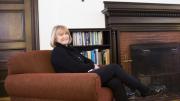A prestigious research institute in east Cambridge, and its 110,000-square-foot facility overlooking the Charles River, may soon be merged into the Faculty of Arts and Sciences, according to an October 26 article in Science magazine.
The Rowland Institute for Science, founded in 1980 by Polaroid creator Edwin Land '30, S.D. '57 (see "Reshaping the Science Center," page 68), has a history of Harvard-linked research activity. Several of its past and current senior scientists--including Howard Berg, professor of molecular and cellular biology and professor of physics; McKay professors of applied physics and professors of physics Jene Golovchenko and Lene Hau; and research professor of biology Daniel Branton--have FAS appointments.
The basis for the creation of the institute, according to its website, was Land's vision "of a relatively small yet highly productive interdisciplinary institution" whose culture would be "focused on the group as well as the individual." Rowland appointments have been coveted because researchers have generally not had to engage in the time-consuming, sometimes constraining process of seeking grant money from other sources, freeing investigators to focus solely on their science. With its endowment, which according to Science is between $50 million and $100 million, the institute has funded the work of 18 senior investigators, 15 postdoctoral fellows, 19 technical and administrative staff members, six graduate students in degree programs at area universities, and as many as 10 other scientific visitors and collaborators.
But the institute's wide-ranging, team-based research in the physical, chemical, and biological sciences and its 20,000-volume library (including 12,000 serial titles), are costly to fund: its annual budget, reportedly $7.5 million, appears greater than its reported endowment can support long-term. The Science article, which says that discussions between members of the Land family and dean of the Faculty of Arts and Sciences Jeremy R. Knowles are ongoing, quotes "sources close to the talks [who] say that members of the Land family--who declined to discuss the issue--have decided the institute is too expensive to maintain." Should the Rowland become part of FAS, the precise nature of its relationship to the University, the status of its current staff members and their interactions with faculty, and how the institute would be funded, remain unclear. Nonetheless, with all the constraints on physi-cal space in Cambridge and the ur- gent need for additional science facilities, rolling the Rowland into Harvard would doubtless be a great boon to the University's scientific research efforts.





